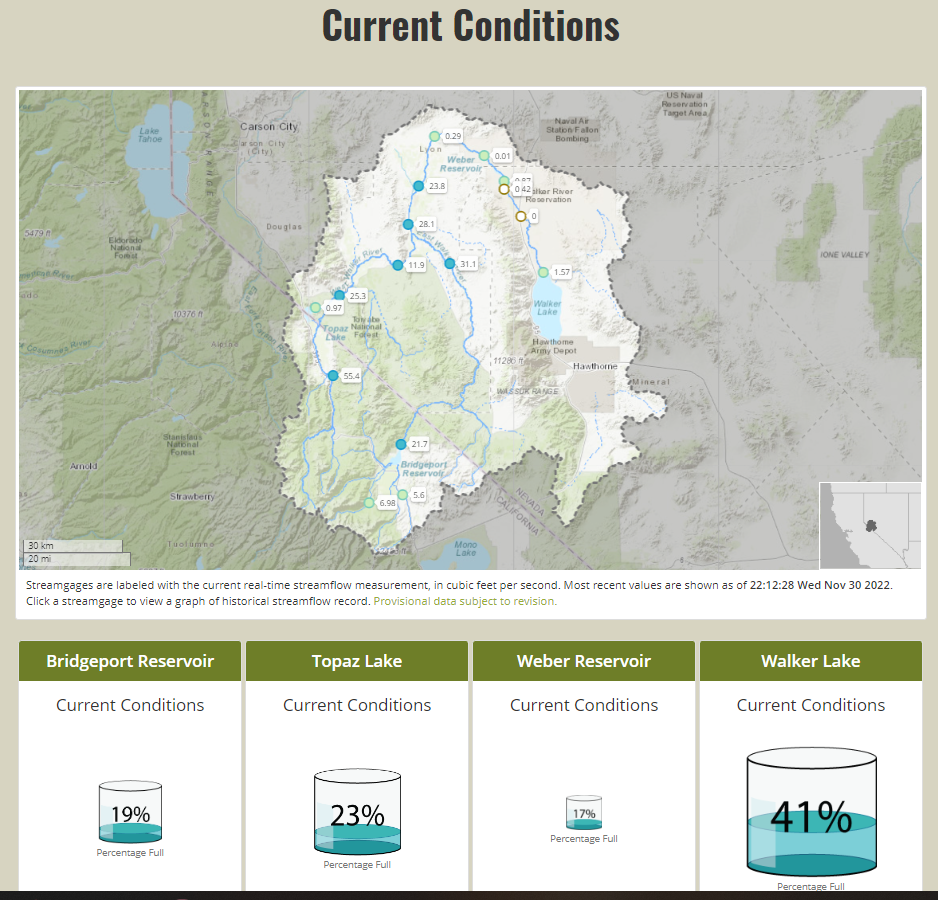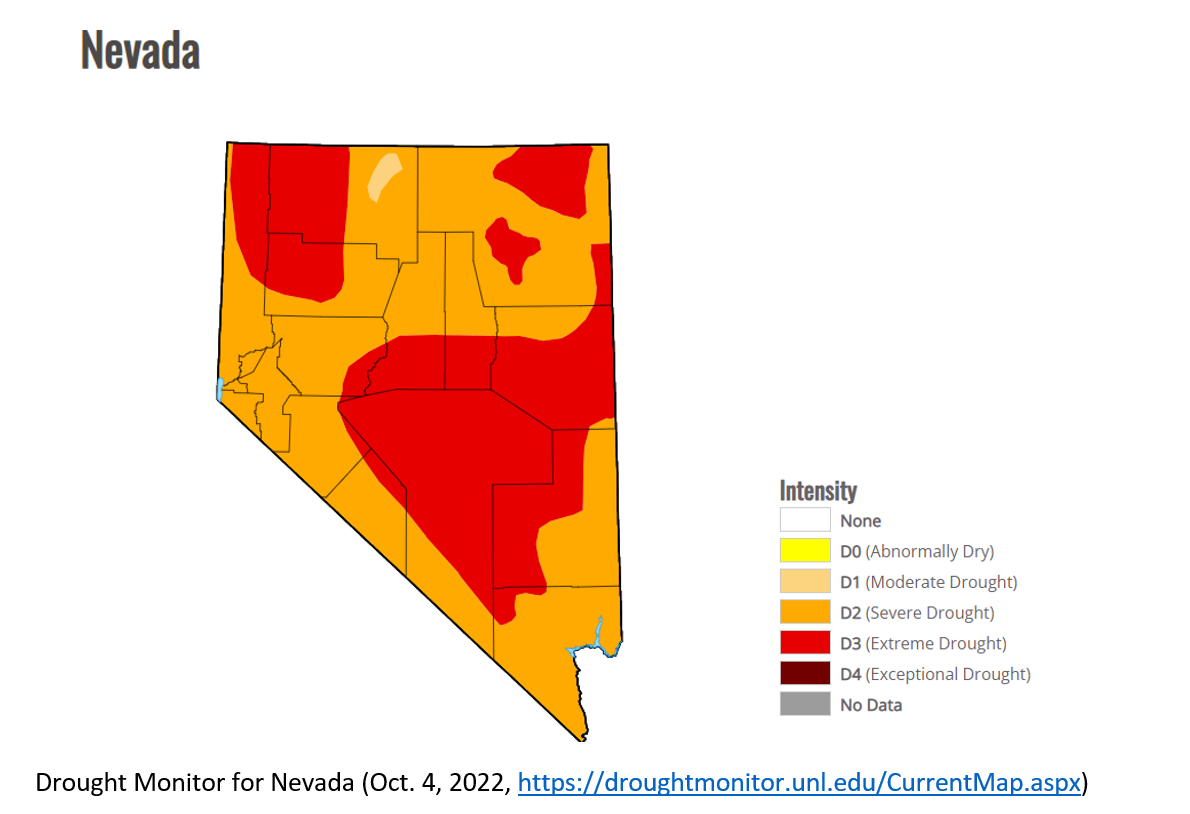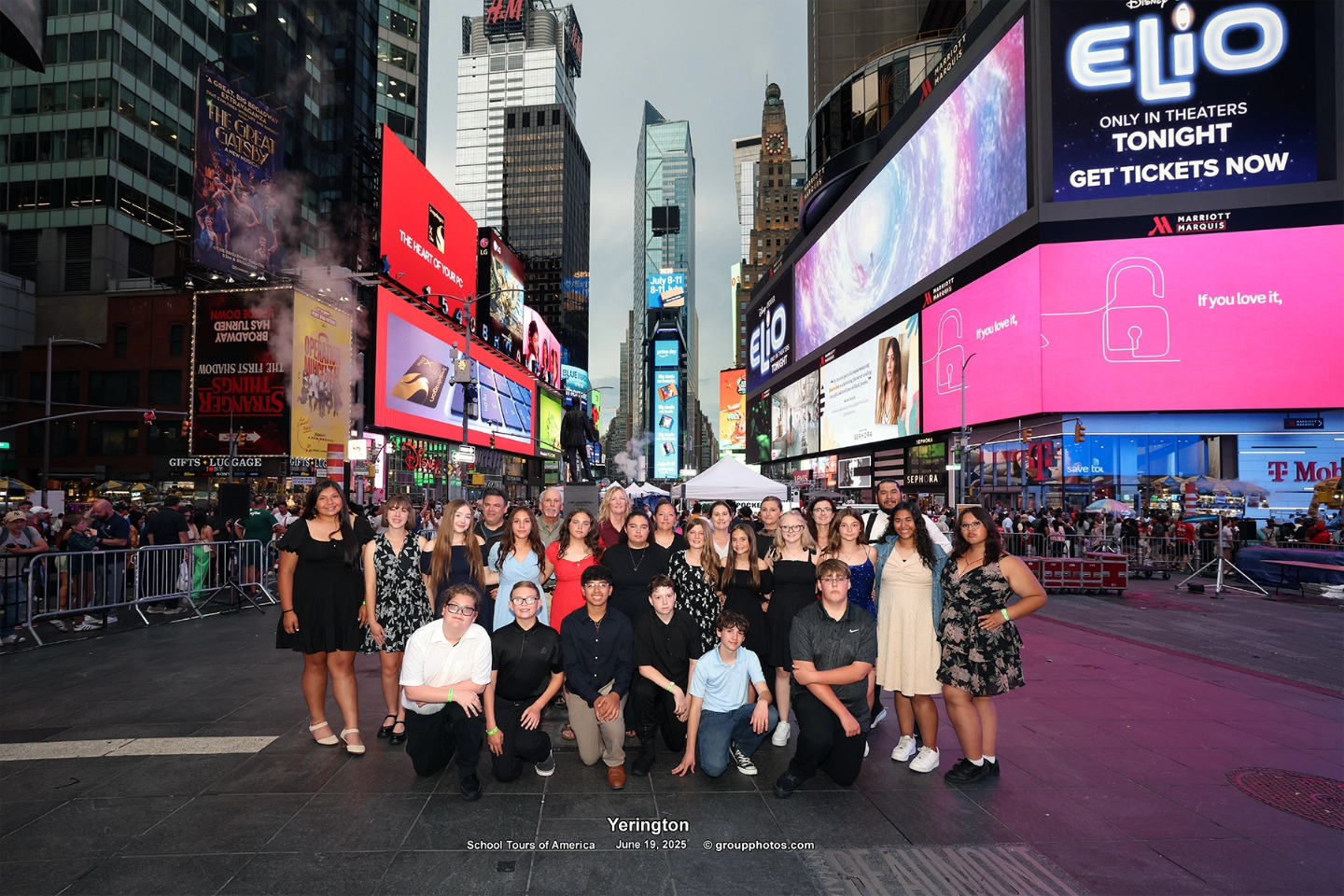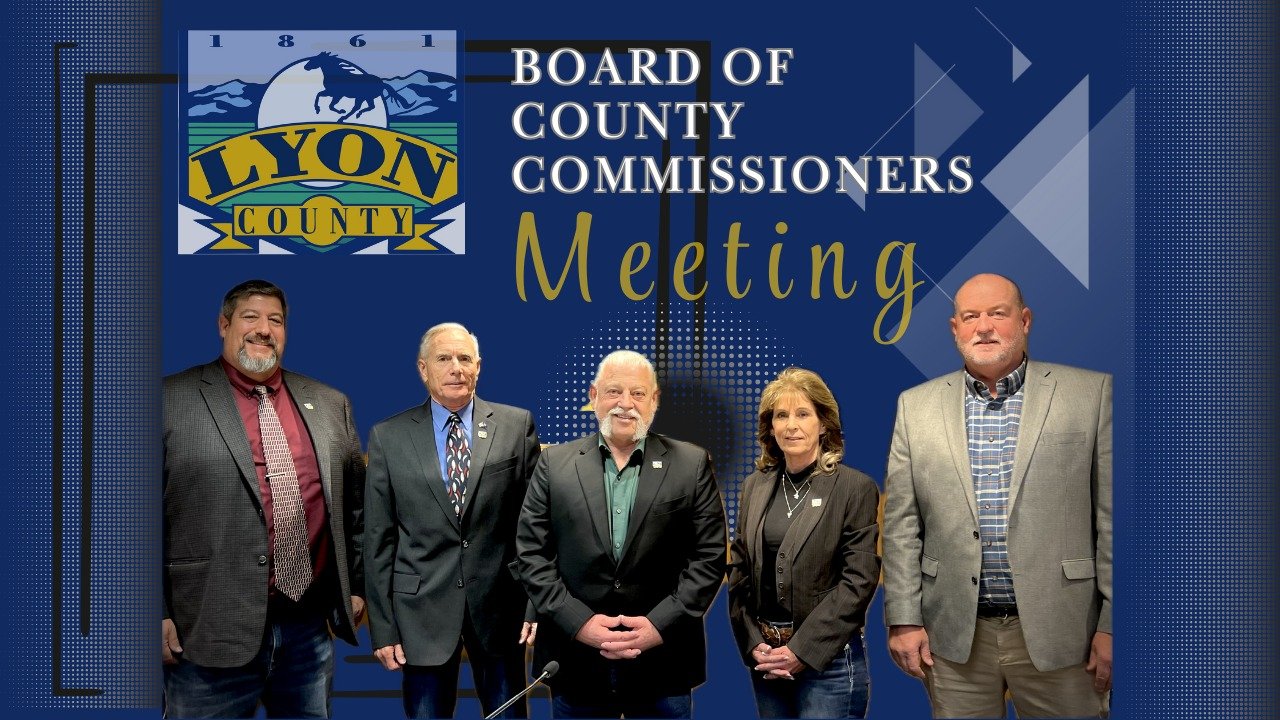A Wild Water Year in Review
November 29, 2022
This past water year was a wild ride for precipitation in the Walker Basin, with months posting both record highs and lows. The first few months started strong with record precipitation in October and December and left the Walker Basin at 203% of average precipitation on December 31st, 2021. But the next few months left us with almost no rain or snow and by April 1, 2022, the Walker Basin was at 87% of average for precipitation
More importantly, the snow water equivalent, which measures the amount of water stored in snow and predicts how much water will flow in the Walker River in the following months, was only at 58% of average on April 1, 2022. Ultimately, late spring snow and summer rain brought the Walker Basin to 94% of average for precipitation by the end of the water year on September 30, 2022, but overall the region suffered with lower than average water availability and continued drought. Three years of below average precipitation has left most of the State in severe or extreme drought.
The Walker Basin Conservancy works to reverse Walker Lake’s ecological collapse by acquiring water rights along the Walker River and protecting those flows to Walker Lake instead of diverting them. Since the 1850’s, Walker Lake has lost more than 90% of its volume. As the water has gone down, its salinity has gone up, and Walker Lake no longer supports fish life of any kind.
With a better year and a new approval for more water to be protected instream, the Walker Basin Conservancy had 3 times the water at the Wabuska gage (a main administration point) this year compared to last and almost 10 times the amount of water we saw in 2020 (Walker Basin Hydro Mapper). 
This demonstrates continued progress in getting water to Walker Lake, but we still have a long way to go to reach our goals. Overall, everyone in the Walker Basin struggled to get the water they needed this year, despite almost average precipitation amounts. The water we sent to Walker Lake also experienced poor water conveyance with limited water reaching the lake. This year, in the lowest section of the Walker River, below the last diversion points, we experienced record high losses to the water we sent to Walker Lake. Altogether, Walker Lake only received slightly more water than last year. This section of the Walker Rivers runs dry in almost all years, and it is likely that the hydrologic function in this section has been severely disrupted over the last 150 years. The Conservancy is working closely with U.S. Geological Survey (USGS) and the Walker River Paiute Tribe to better understand how water moves in this section, the ground water and surface water connection, and how we may improve water conveyance in upcoming years. We are also hoping for a great water year to come!
Peter Stanton
Executive Director
Walker Basin Conservancy
(775) 525-1233
peter.stanton@walkerbasin.org






More Stories
Nevada State Parks: Free Adventure Day on Saturday, June 14, 2025
NDOW Reports Its Finding on Walker River Fish Die-Off in Mason Valley, Nevada During May 2025
City of Yerington Requests Water Users to Conserve